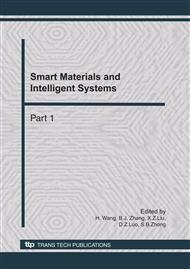p.303
p.308
p.313
p.318
p.323
p.328
p.333
p.338
p.343
Research and Construction on Simulation Traffic Environment with Inter-Car Communication
Abstract:
In this paper a specific construction method based on the NS-2 software environment was studied to simulate the inter-car communication and constitutes. And the implementation methods of inter-car communication were described. The simulation traffic environment what we have described have good use to the research of relate technologies in the intelligent transportation systems such as inter-car etc., and have a important meaning to the simulation experiment of inter-car and algorithm.
Info:
Periodical:
Pages:
323-327
Citation:
Online since:
October 2010
Authors:
Keywords:
Price:
Сopyright:
© 2011 Trans Tech Publications Ltd. All Rights Reserved
Share:
Citation:


